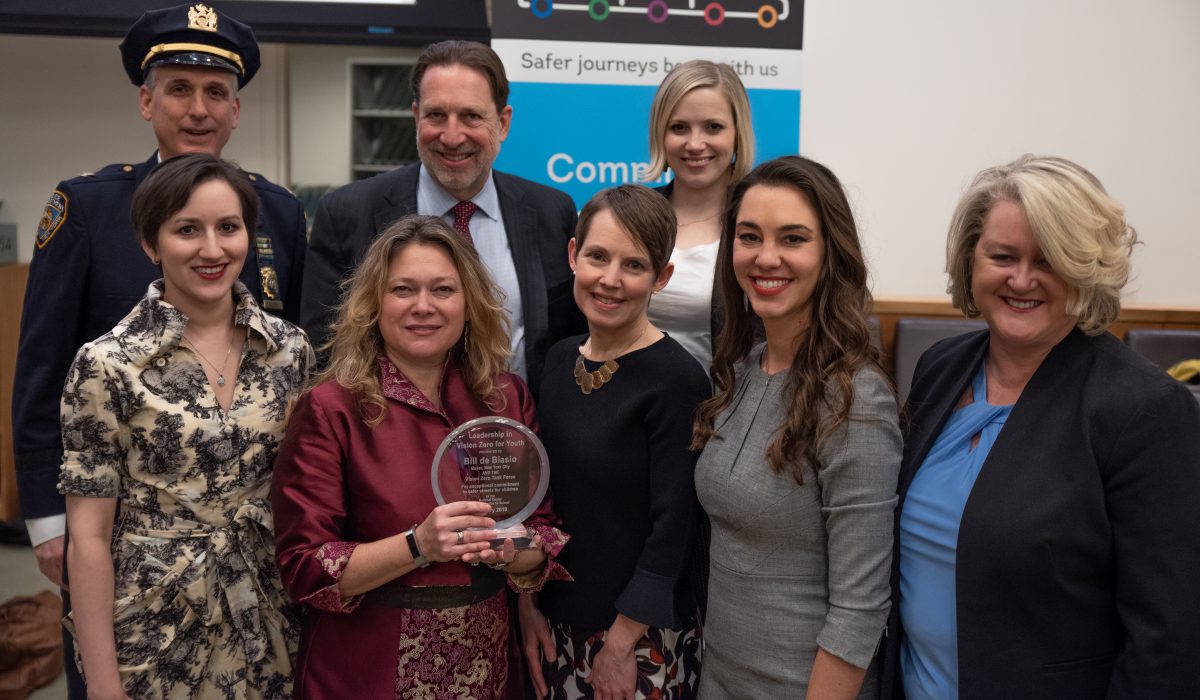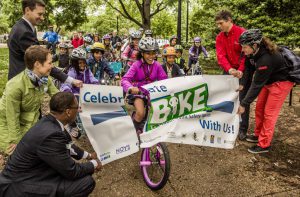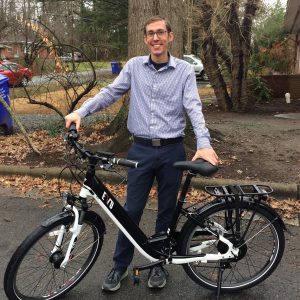Recent Center Highlights
Safe Systems Summit Held in Durham, Presentations Now Available
The Collaborative Sciences Center for Road Safety, in partnership with the North Carolina Governor’s Highway Safety Program, hosted its first Safe Systems Summit in downtown Durham, April 23-24, 2019.
More than 340 transportation, public health and city and government professionals and advocates from across the United States gathered together with the aim to discuss and better understand Safe Systems and systems thinking and transportation safety.
At the Summit, attendees explored the complexity of transportation systems and the changing nature of safety challenges; shared principles and practices from Safe Systems approaches effectively applied in different contexts; introduced and described systems tools and methods that can be applied to build upon common values, developed shared goals and languages, supported coordinated action, and carried lessons and knowledge forward, as well as cultivated new ideas and discover resources.
To view some of the presentations displayed at the Summit, click here.
Complete Streets: What are they and where can we learn about them?
![]()
HSRC will lead six workshops in May and June 2019 to support the North Carolina Department of Transportation’s efforts to plan and develop Complete Streets around the state. These workshops will focus on implementing NCDOT’s Complete Streets policy – to create more Complete Streets that meet the needs of all road users, including pedestrians, bicyclists and transit riders.
The sessions will engage a diverse audience of state and local staff, community organizations and stakeholders, and decision-makers on the topic of Complete Streets; establish relationships between these organizations to build support for Complete Streets projects; and equip participants with the tools and information they need to more effectively engage in transportation decision making.
The workshops, intended to facilitate discussions among a diverse group of audiences, including state and local transportation professionals, policy makers and local elected officials, and community organizations and non-profit groups working to improve health and safety, are planned by HSRC and team members from VHB and Ramey Kemp & Associates. To find a workshop near you, learn more, or register, visit www.completestreetsnc.org.
Wake County Model Safe Routes to School Project – A Technical Assistance Project for HSRC
HSRC is working with regional partners in Wake County, NC, to model Safe Routes to School (SRTS) programs at five schools while encouraging changes to policy and practice that can support pedestrian safety at the school-, municipal-, and regional-level. Accomplishments since the start of the project in 2015 include: SRTS action plans for the five partner schools, low-cost pedestrian safety projects, an improved school district wellness policy, new guidelines for the design of school sites, numerous municipalities recommending the adoption of Complete Streets policies, and a SRTS subcommittee that is convened by the Raleigh area’s Metropolitan Planning Organization. Project partners are continuing to support the model programs and policy change, while disseminating best practices that have been identified thus far. For more information, please visit the project website: www.saferouteswakecounty.org.
Safe Routes to School and Vision Zero for Youth in the News

New York City receives National Vision Zero for Youth Leadership Award
The National Center for Safe Routes to School awarded New York City’s Mayor Bill de Blasio and Vision Zero Task Force the Vision Zero for Youth Leadership Award February 28, 2019. This national award, now in its second year, recognizes cities that are leading the way in prioritizing children’s safety while also improving pedestrian and bicyclist safety for all ages through Vision Zero.
New York City’s Vision Zero work has resulted in significant safety changes that have benefitted youth throughout the city. The city demonstrates leadership with its engineering, enforcement, education and legislation as well as its unprecedented interagency collaboration of the Mayor’s Office with multiple NYC Departments including Transportation, Police and Citywide Administrative Services. Bold engineering in school zones including leading pedestrian intervals, school speed zones and speed bumps along with the successful and recently revamped speed camera program have led to lower injuries and fatalities in and around schools.
Communities Across the U.S. Celebrate Bike to School Day, Focus on Health and Safety

Hundreds of thousands of students, parents, school officials, and local leaders in communities across the U.S. strapped on their helmets and pedaled to school on May 8, 2019, to celebrate the 8th annual National Bike to School Day while also raising awareness of road safety for children and everyone.
So far this year, more than 3,100 communities across the U.S. have registered Bike to School Day events on walkbiketoschool.org. The total number of events is expected to grow as celebrations continue throughout May, National Bike Month. Communities can continue to register through May 31.
The Bike to School Day national event took place in Washington, D.C., where local and national officials and partners gathered at Lincoln Park with approximately 250 students and other community members from the Capitol Hill neighborhood. After a spirited celebration including the National Center for Safe Routes to School, U.S. Department of Transportation, District Department of Transportation, the FIA Foundation, Ward 6 Public Schools Parent Organization, and the Pedestrian and Bicycle Information Center, students from more than fifteen schools formed “bike trains” to depart from Lincoln Park.
Communities are invited to participate in National Walk to School Day on October 2, 2019, as participants walk their way to a healthy and safe day to school.
Pedestrian Crash Reductions Due to Watch for Me NC Safety Program
The Watch for Me NC program supports the recent NCDOT “Vision Zero” initiative to eliminate roadway deaths and injuries in North Carolina. Specifically, the program directly addresses pedestrians and bicyclists, two types of vulnerable road users that fall within the Vision Zero focus area. The NCDOT Watch for Me NC program was launched in 2012 with four pilot communities. Over the course of seven years (2012 – 2018), the program reach has expanded to a total of 50 communities across 37 counties.
In 2018, NCDOT commissioned a study to evaluate the safety effectiveness of the program over the last seven years, measured by changes in pedestrian and/or bicyclist crash frequency.
Study results from HSRC show a reduction of county-wide pedestrian crashes due to the Watch for Me NC program. The total pedestrian crashes show a statistically significant reduction of 12.8 percent along with a 21.7 percent reduction in nighttime crashes and a 9.5 percent reduction in failed to yield crashes, both statistically significant.
Staff Spotlight

HSRC Research Associate Seth LaJeunesse can now be seen riding through the streets of Chapel Hill and Carrboro, NC on a brand new Easy Motion BH e-bike – a randomly selected prize from Greensboro-based E-Bike Central for attending the North Carolina BikeWalk Summit in October 2018.
The black, white and red e-bike has four electric assist settings, making going up hills a “no-sweat ordeal,” says LaJeunesse. “With electric assist set to ‘on,’ once you push down on the pedal, off ya go.”
An avid bicyclist, LaJeunesse was new to the e-bike experience but took to it quite quickly. Quickly and safely being a necessity because on his account, “this baby’s got zip!”